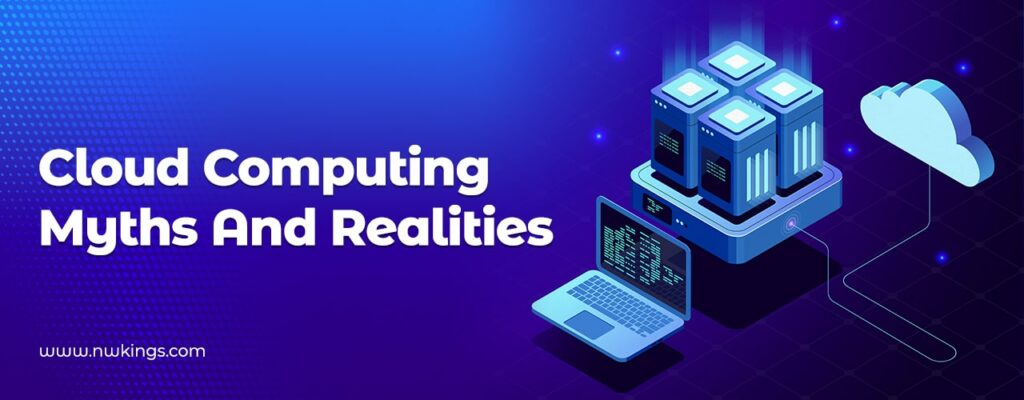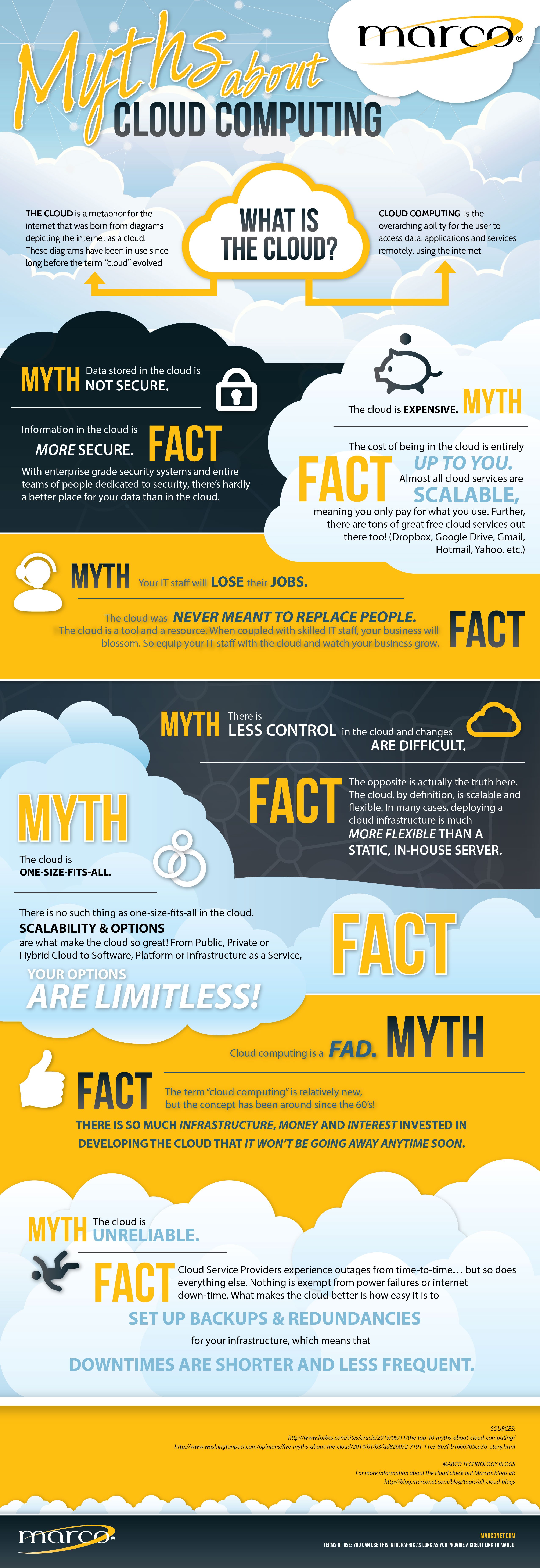
Introduction
Defining Cloud Computing Myths
In today’s digital landscape, cloud computing has emerged as a game-changer for businesses of all sizes. However, despite its growing popularity, numerous misconceptions about cloud services persist. These cloud computing myths often stem from outdated information or a lack of understanding of how cloud technology operates. Some common myths include beliefs that cloud solutions are inherently insecure, cost-prohibitive, or that they result in a loss of control over critical data.
In reality, these misconceptions can hinder businesses from fully embracing the cloud’s potential.
Significance of Busting Cloud Computing Myths
Busting these myths is crucial for several reasons:
- Empower Organizations: By addressing and correcting these misconceptions, businesses can make informed decisions about adopting cloud strategies.
- Cultivate Trust: Understanding the realities of cloud computing foster confidence among stakeholders regarding security and data management.
- Encourage Collaboration: A clearer perspective on cloud capabilities can enhance teamwork and innovation as organizations leverage these technologies.
As we dive deeper into the topic, we’ll explore these myths and their realities, painting a clearer picture of what cloud computing truly offers.

Common Misconceptions in Cloud Computing
Myth 1: Security Concerns
One of the most prevalent misconceptions is that cloud computing is insecure. Many organizations worry about data breaches or unauthorized access, often without considering that reputable cloud service providers implement robust security measures. For instance, encryption protocols, firewalls, and 24/7 monitoring become standard protocols, making cloud environments often more secure than on-premises systems.
Myth 2: Lack of Control Over Data
Another common myth is the belief that using cloud services means relinquishing control over sensitive data. In reality, many cloud providers offer advanced management tools that allow businesses to monitor their data access and usage effectively. A personal experience shared by many businesses involves realizing that they can set strict permissions and have full visibility into their data management activities, ensuring they maintain control while enjoying cloud benefits.
Myth 3: Cost Considerations
Lastly, there’s the notion that cloud solutions are always more expensive than traditional infrastructure. However, the truth is often the opposite. By utilizing cloud services, businesses can benefit from:
- Pay-as-you-go models: Paying only for what is used.
- Reduced hardware costs: Less need for expensive on-site equipment.
These factors make cloud computing not only more flexible but also potentially more cost-effective than traditional IT solutions.

Debunking Cloud Computing Myths with Facts
Fact Check: Security Measures in Cloud Computing
Let’s set the record straight: cloud security is not just about protecting data; it’s about implementing comprehensive, multilayered security strategies. Cloud providers invest heavily in security technology, utilizing advanced encryption standards, identity management, and compliance certifications like ISO 27001. For example, organizations that switch to cloud solutions often find enhanced security protocols in place, far superior to many legacy systems.
Fact Check: Data Management and Ownership
When it comes to data management, many businesses fear losing control over their information. However, it’s essential to understand that cloud services do not mean giving up ownership. In most agreements, businesses retain full rights to their data, with clear policies outlining access and management. Anecdotes from companies that have successfully migrated clarify this point—they maintain stringent control over their data policies while leveraging cloud advantages.
Fact Check: Cost Effectiveness of Cloud Solutions
What about costs? Contrary to beliefs that cloud computing is costly, many companies experience savings after migrating. With cloud solutions, businesses can save on:
- Maintenance costs: Say goodbye to constant hardware upgrades.
- Operational flexibility: Scale resources based on current needs.
By recognizing these facts, organizations can confidently navigate their cloud computing journeys.

Benefits of Cloud Computing
Enhanced Flexibility and Scalability
One of the standout benefits of cloud computing is its remarkable flexibility and scalability. Businesses can easily adjust their IT resources based on demand. For instance, a growing e-commerce company can quickly scale its storage and computing power during peak shopping seasons without significant upfront costs. This ability to adapt resources on-the-fly ensures that organizations can respond swiftly to market changes—saving both time and money.
Improved Collaboration and Accessibility
Cloud computing also revolutionizes collaboration and accessibility. Teams can work together in real time, regardless of their physical location. Imagine a marketing team spread across different cities, seamlessly sharing documents through a cloud-based platform. Personal anecdotes from companies highlight how their teams are more cohesive and productive, as they can access essential files from anywhere using just an internet connection.
Cost-Efficiency and Resource Optimization
The financial advantages of cloud computing cannot be overstated. With a pay-as-you-go model, organizations can minimize waste on unused resources. Additionally, by reducing the need for physical servers, companies can allocate IT budgets toward innovation rather than maintenance. This resource optimization translates into improved outcomes and overall efficiency—an essential component for any business striving to thrive in today’s competitive environment.

Real-World Examples and Case Studies
Case Study 1: Company A’s Successful Migration to the Cloud
Consider the journey of Company A, a mid-sized retail business that decided to migrate its operations to the cloud. Initially hesitant due to fears of increased costs and complex transitions, they eventually partnered with a reputable cloud service provider. The results? A remarkable transformation! Company A reported a 30% reduction in overall IT costs within the first year. They benefitted from improved inventory management, allowing them to keep track of stock levels in real time. The flexibility of cloud resources meant they could scale their operations during seasonal peaks. Their success story became a prime example of how cloud computing can drive growth and operational efficiency.
Case Study 2: Overcoming Cloud Myths in Healthcare Industry
Now let’s look at the healthcare industry, often skeptical about cloud adoption due to stringent regulations. A well-known hospital system, wary of privacy concerns, embraced cloud solutions to enhance patient data management. By collaborating with cloud providers experienced in healthcare compliance, they fortified security measures, enabling secure access for healthcare professionals. This pivot not only streamlined communication but also improved patient care delivery. The hospital’s experience illustrates that with the right strategies, even industries laden with myths about cloud computing can reap significant rewards.

Addressing Concerns and Implementation Strategies
Educating Stakeholders and Employees
To ensure a smooth transition to the cloud, it’s essential to educate stakeholders and employees alike. Many organizations find that a robust training program helps demystify cloud computing. Workshops and informational sessions can address concerns and outline the benefits. For instance, one company conducted a series of lunch-and-learn sessions where employees shared their successful experiences using cloud tools. This not only alleviated fears but also promoted a culture of innovation.
Choosing the Right Cloud Service Provider
Selecting the right cloud service provider is crucial to a successful implementation. Organizations should assess providers based on criteria like:
- Security features: What encryption protocols do they offer?
- Compliance track record: Are they familiar with industry regulations?
- Customer support: Do they provide 24/7 assistance?
Conducting thorough research and asking for references can lead to a better partnership.
Proactive Monitoring and Risk Mitigation Plans
Finally, proactive monitoring and risk mitigation plans should be an integral part of cloud strategy. Implementing regular audits and security assessments ensures that potential threats are addressed early on. For example, one company instituted a quarterly review process, leading to the identification of vulnerabilities before they became significant issues. By prioritizing education, choosing wisely, and monitoring continuously, organizations can navigate their cloud journey with confidence.

Future Trends and Innovations in Cloud Computing
Artificial Intelligence and Machine Learning Integration
As we look toward the future, one of the most exciting trends is the integration of artificial intelligence (AI) and machine learning (ML) into cloud computing. This combination is revolutionizing how data is processed and analyzed. Imagine a scenario where a retail company uses AI algorithms hosted in the cloud to predict shopping trends based on customer behavior. As companies harness AI and ML, they can enhance their decision-making processes and improve operational efficiency significantly.
Edge Computing and IoT Applications
Another critical trend is the rise of edge computing, especially as the Internet of Things (IoT) expands. By processing data closer to its source, edge computing reduces latency, which is crucial for applications requiring real-time responses, such as autonomous vehicles or smart city implementations. A personal anecdote from a tech firm illustrates this perfectly—their deployment of edge computing led to a 50% decrease in response time for data analytics, proving there’s immense potential here.
Sustainability and Green Cloud Computing Initiatives
Finally, sustainability is becoming a major focus in cloud computing. Companies are increasingly aware of their carbon footprint and are turning to green cloud initiatives. This involves utilizing energy-efficient data centers and embracing renewable energy sources. A recent report showed that organizations adopting sustainable practices in their cloud operations not only enhance their corporate social responsibility (CSR) image but also achieve cost savings. By prioritizing innovation in these areas, businesses can ensure they are prepared for the future.

Conclusion
Recap of Debunked Cloud Computing Myths
As we wrap up our exploration of cloud computing, it’s vital to revisit the myths we’ve debunked along the way. We’ve established that concerns about security are often overblown, as leading cloud providers employ rigorous safeguards. Additionally, businesses retain control over their data while leveraging scalable cloud resources, and many find that cloud solutions are more cost-effective than traditional setups. By addressing these misconceptions, organizations can approach cloud adoption with greater confidence and clarity.
Looking Ahead: Advancements in Cloud Technology
Looking ahead, the future of cloud technology is brimming with exciting advancements. With the integration of AI and machine learning, businesses can expect enhanced data analytics and streamlined processes. Furthermore, edge computing will revolutionize how data is handled, making it faster and more efficient. Sustainability initiatives will also play a critical role, as companies strive to minimize their environmental impact while maximizing performance.
As companies navigate this changing landscape, embracing these trends will be key to staying competitive and innovative. The potential of cloud computing is vast, and by harnessing its capabilities, organizations can position themselves for success in the digital age.

